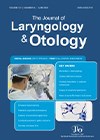
Journal Reviews
Wandering foreign bodies in the upper aerodigestive tract
Fish and chicken bones, along with metal wires, are among the most commonly ingested foreign bodies. Due to their linear shape and sharp edges, they can sometimes migrate beyond the lumen, making conventional endoscopic extraction unsuccessful. This issue is further...
Measuring radiation fibrosis in patients with head and neck cancer
People treated with radiotherapy for head and neck cancer experience several acute and chronic effects of this treatment, of which fibrosis is perhaps the most common. Fibrosis occurs as a wound healing response and leads to scarring and reduced range...
Sleep apnoea got your heart in your throat? Perhaps it’s time to ditch the CPAP and fetch the scalpel
The link between obstructive sleep apnoea (OSA) and cardiovascular disease (CVD) is clear. Its well-established association with essential hypertension is thought to link OSA to an increased risk of atherosclerotic and hypertensive sequelae. However, data on the long-term impact of...
Older patients hospitalised for pneumonia: what factors determine survival after discharge?
A high proportion of older adults hospitalised for pneumonia may have co-existing risk of aspiration due to dysphagia. The authors of this single-centre retrospective cohort study followed up patients over the age of 65 who were admitted to hospital with...
Does vocal tremor lead to changes in swallowing function?
Vocal tremor (VT) is a debilitating problem, but remains challenging to treat. Its pathophysiology remains indeterminate and there is a lack of consensus on phenotypes. Clinically, VT is often noted to be present in muscles outside of the larynx, including...
Adjuvant radiotherapy for T4N0 laryngeal cancers treated with laryngectomy
A total laryngectomy remains the gold standard for the initial treatment of advanced (T4) squamous cell carcinomas of the larynx without evidence of distant disease. Adjuvant radiotherapy (RT) is also recommended for such cancers. In the absence of other adverse...
Tonsillectomies are a pain in the neck!
You thought tonsilitis was bad? Having your tonsils removed, now that’s a hard pill to swallow. Very well, you’ll no longer have to fear the CENTOR, but how do we make recovery as pain-free as possible? Pantabtim and colleagues set...
Dysphagia services in the emergency department
The emergency department acts as the first port of call for many individuals with wide-ranging diagnoses and conditions, several of whom may potentially present with dysphagia. It is not a usual environment in which speech and language therapists regularly work,...
How rare is vocal fold paralysis after spinal and epidural anaesthesia – should we be more concerned?
The authors present an unusual case of right vocal fold paralysis. Their patient was a 38-year-old woman who experienced new onset dysphonia following neuraxial anaesthesia (NA) for a caesarean section. Flexible nasendoscopy showed a right VFP with fixation in the...
Transoral laser microsurgery (TLM)
This review article describes the surgical technique of transoral laser microsurgery (TLM) for the piecemeal removal of tumours of the upper aerodigestive tract using carbon dioxide laser. This technique gained acceptance after Wolfgang Steiner published his paper on the treatment...
Poking the bear: learning to drain quinsy on a mannequin head
Simulation in medicine has gained significant traction in both undergraduate and postgraduate training over the last couple of decades or so – the benefits to all involved are clear. The airline industry models for human factors and crew resource management...
Reducing pulse rate in videofluoroscopy: less is not best!
Recently, there has been increasing discussion in clinical meetings about the use of ionising radiation in swallowing assessments and the associated cancer risks. This is therefore a timely publication to inform discussions around whether reducing pulse rate from 30 pulses...














